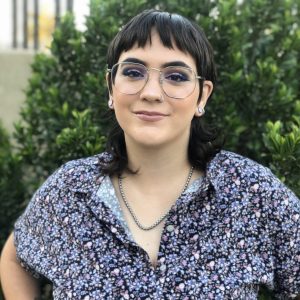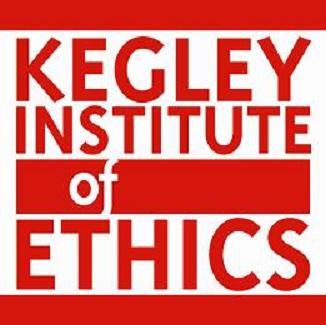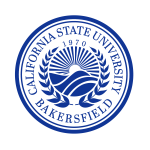Civics Education & Social Justice
 Submitted by KIE 2021-22 Student Fellow, Cassidy Sheppard
Submitted by KIE 2021-22 Student Fellow, Cassidy Sheppard
When I decided to go back to college last year, I had an epiphany about the work I would like to do in the future. I read a study about teachers in juvenile hall, and suddenly it all clicked: my passion to understand and teach others about politics and social issues, and my past frustration with the K-12 education system can be positively channeled through working with youth who struggle like I have, and who struggle more than me. I long to take an ethical, socially conscious and critical approach to civics education to help students better understand the social and political institutions and ideologies that shape our society, and support students in empowering themselves to be active in political life in whatever way they see fit.
The ultimate goal of my project with the Kegley Institute of Ethics was to work with students in continuation schools or juvenile halls to foster their ability to critically think about social- political issues that matter to them. In working with KIE Assistant Director Dr. McCullough, we developed a plan for a book club with students in the Pathways Academy run by the Kern County Probation Department. This is a program for children who have been convicted of a crime; the program offers rehabilitation services such as mental health support, educational programs and community service opportunities. The two students that participated in the book club were seniors in high school and looking forward to graduating.
The book I selected for the club, On the Come Up by Angie Thomas, is a story about a teen girl who lives in the outskirts of Jackson, Mississippi, who dreams of becoming a rapper, but struggles with many issues, from poverty to racial discrimination. Through her inner power and the support of her family and friends, her dreams begin to flourish. Although I had initially imagined taking a nonfiction approach, I found this Young Adult Novel to be incredibly relatable and substantive. The story takes on very real and complex issues that many young people, particularly youth from poor communities and communities of color, face in this country, and specifically here in Bakersfield. After reading this story, the anticipation of meeting with students and hearing their thoughts on the book and the issues it covered grew.
The first time I walked into Pathways was on April 4th, 2022. When Dr. McCullough and I walked through the scanner, we were greeted by several probation officers who had us sign in, confirmed they knew why we were there and where we were going. While being escorted through the premises, we passed by two of the most somber rooms; these rooms were made of nothing but concrete, with concrete slabs intended to serve as a bench or a bed. Juxtaposed to these rooms was a nursery. The contrast between the support of child development on one side, and the adultification of youth on the other really put incarceration of children in perspective. After walking through an outdoor corridor, passing by an empty baseball field and a family of stray cats, we made it to the unit.
The unit looked as I expected it to look: like a prison. Although initially seven students were going to participate in the book club, by the date of our meeting only two students were left in the unit. They both sat at steel tables on opposite ends of the room. The officer introduced us to the students, and to make things more comfortable, I asked if we could all sit together at one table. Dr. McCullough and I joined the students at a table and sat down on the cold, steel seats. We introduced ourselves and expressed our gratitude for their participation in the book club. After getting introductions out of the way, I started by asking their general thoughts on the book, favorite part, and favorite character/characters. One of the students had not had the ability to read the book yet, so I gave a brief synopsis of the story. We then went over some of the discussion questions on the guide that had been provided for them along with the book. Tough topics came up, and I wanted to dig deeper, but found it difficult as this was the first time meeting the students, so no rapport had been established. It was also challenging to get the students to have a dialogue due to the small group and the lack of familiarity. Although there were challenges, there were some great insights made by the students, and so the goal was met.
Though we were only able to meet once for an hour with these students, this experience was important and influential to me. One of the students was very reserved and did not give much input in discussing the book, but the times where I could see them smile behind their mask and laugh offered relief and fulfillment. I will take what I learned from this experience with me on my journey to becoming an educator and apply these lessons to my day-to-day life. I left with a longing to do more of this work, to connect with youth in my community and to support students in becoming civically aware and active. Most importantly, it made me more aware of the predicament of youth who grow up in poor and criminalized communities and the reality of incarceration of children, which motivates me to be an advocate for these kids and for systemic change to stop kids from going to jail.





